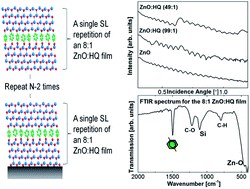Efficiently suppressed thermal conductivity in ZnO thin films via periodic introduction of organic layers
Abstract
A combination of atomic and molecular layer deposition techniques is used to fabricate thin films of hybrid inorganic–organic superlattice structures with periodically repeating single layers of hydroquinone within a ZnO or (Zn0.98Al0.02)O framework. A significant reduction of up to one magnitude in the thermal conductivity of the films as evaluated with the time-domain thermoreflectance technique is observed upon introduction of the organic layers, resulting in a greatly improved thermoelectric performance.


 Please wait while we load your content...
Please wait while we load your content...